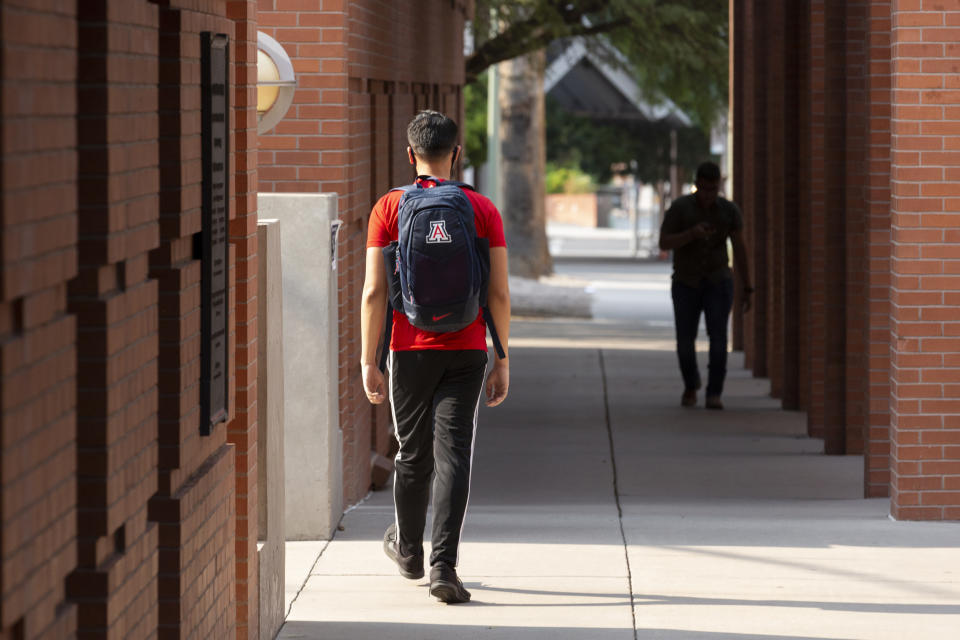These 7 colleges keep track of Latino students' success after they graduate
A new report highlights the strategies used by seven colleges to make sure their Latino students succeed after graduating.
The analysis released this month from Excelencia in Education, a nonprofit group focused on boosting Latino college completion, describes how Hispanic-serving institutions are helping to redefine the role colleges and universities play in the lives of students even after they leave campus. HSIs are defined by the Department of Education as having a student population that is at least a quarter Hispanic.
The seven schools include Austin Community College, California State University-Fullerton, Long Beach City College, Texas State University, University of Arizona, University of Illinois Chicago and Wilbur Wright College.
Teams on each of the campuses worked for about half a year to conduct internal assessments of how they continue to serve their Latino students after graduating, or what the report calls “post-completion” of a degree.
According to the report, many of the schools have made gains when it comes to closing equity gaps in the post-completion success of their Latino students. Gabriel Bermea, a senior research analyst at Excelencia and the author of the analysis, said the data the nonprofit collects is “always around demonstrating impact.”
“We’ve said, for a number of years, we’ve got to get institutions to shift their work from simply enrolling Latino students to serving them with intentionality,” he said.

Most colleges track after-graduation success with metrics such as “workforce readiness and preparedness,” the report says, but these schools differ by “more intentionally” serving Latino students.
Many of them, for example, come up with their own creative ways to track the success of their Latino students after they graduate. Austin Community College uses data from the Texas Workforce Commission to see whether its students are employed, how much money they go on to make and whether their wages improve over time. California State University-Fullerton matches labor market data with its own database to see how its Latino students are faring. The school also looks at alumni and student exit surveys.
Through career mentorship tailored to Latino students, the HSIs also offer “professional identity affirming experiences,” the report says. The University of Arizona has a Latinx faculty and staff association, and Long Beach College has a transfer pathway program that over the past three years has succeeded in increasing its number of Latino students.
Bermea said the findings demonstrate the practical lens through which Hispanic families view sending their children to college, and how “these institutions recognize that.”
“Students are beginning with the end in mind,” he said. “The end isn’t completion. The end is post-completion.”
Follow NBC Latino on Facebook, Twitter and Instagram.

